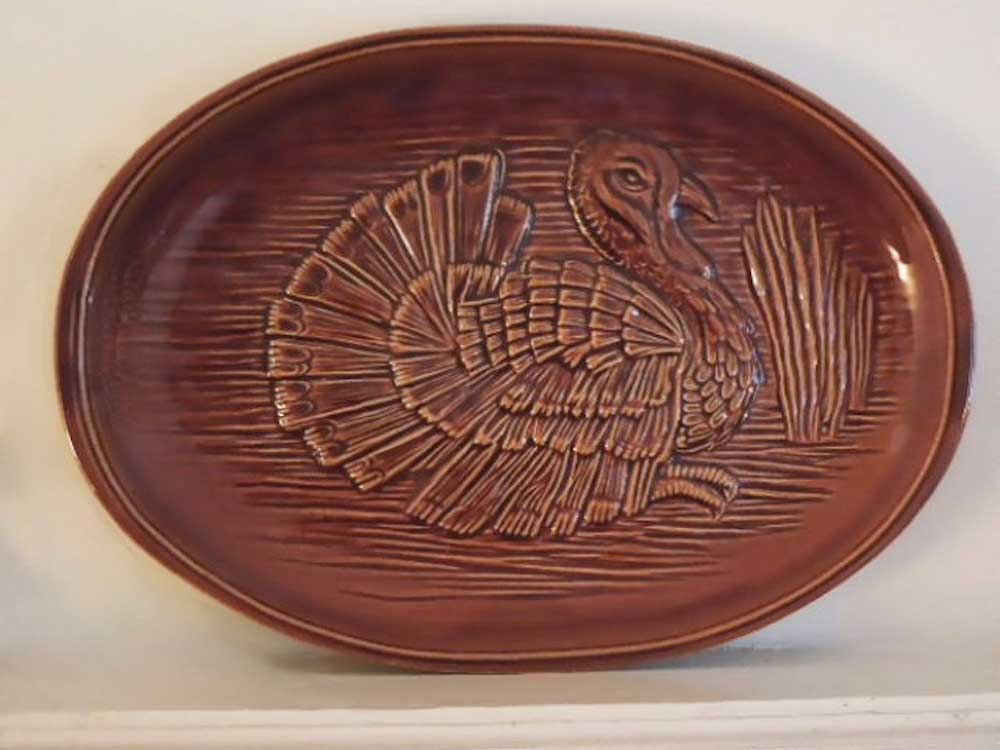November 2024
Good Eye
Gobble up these collectibles for Thanksgiving
by Peggy Whiteneck
Pilgrim forms made of cloth, straw, or ceramics are useful as decorations for Thanksgiving but not so much for the rest of the year. Broadening our focus, there are many Thanksgiving-appropriate collectible items, including some that can be used year-round and not just for that particular holiday.
When I think of Thanksgiving, my first thoughts don’t go to the pilgrims but to the Native Americans who welcomed them. There are many Native American arts, antique and newer, that are especially apt for Thanksgiving and beyond. Think, for instance, of indigenous baskets that can be used to display direct-from-the-garden squash, potatoes, carrots, and gourds. Since many families break out the simple, non-figural nutcracker for this holiday, smaller examples of native basketry can be used to display the nuts in shells (And among the more decorative – but not necessarily edible – nuts for the season, we also have the humble acorn!).
Old Thanksgiving postcards and greeting cards can also be used to decorate a table centerpiece or the walls of the dining room in celebration of the November holiday.
Turkeys are ubiquitous at this time of year – and not just the ones with feathers! Serving pieces and planters in turkey form have been made of pottery and other ceramics, metal, and glass. Glass covered turkeys can be found in which the top lifts away; these have been made by LE Smith and Mosser Glass. Turkey displays have been made of every conceivable raw material, from pine cones to cloth to yarn. You can even find “stuffed” turkey doorstops.
Pumpkins are a popular Thanksgiving collectible, real ones right from the garden or decorative examples, old and new, made of glass, stuffed cloth, or other material. Non-edible ears of corn made of ceramics and three-ear gatherings of natural Indian corn (with multi-colored kernels), usually made for display rather than eating, make great door decorations.
I’m especially fond of decor-ating with gourds, non-edible as they may be, because they grow in so many colorful shapes and forms. And they last a long time as well, so you can get them at harvest at the end of summer and still have them for decorating at Thanksgiving and for weeks afterward.
Small bundles of natural wheat can also be used as harvest décor, but wheat shocks have also been rendered in non-edible forms. Among these are the wheat vases first made in Czechoslovakia and later popularized by Fenton Art Glass, in which the vase flares at the top and is surrounded by glass roping and lobes sculpted on the body of the vase to simulate the shocks of wheat.

This #9370 large, brown glazed turkey platter was made by McCoy in the 1970s. Marked ovenproof. (Image courtesy of the author)
In the mid-1950s, Homer Laughlin and other companies also made gold-accented wheat dinnerware (often called “MCM,” for mid-century modern) that would look fabulous on a Thanksgiving table. The 1960s brought us yellow wheat sheaves on white Fire King table and kitchen glass. In the 1970s, Libbey made “Golden Wheat Sheaves” plus other wheat sheaf design tumblers. Much of this mid-century glass and ceramic tableware can still be found in antique and consignment shops.
A hugely popular collectible has been the Corn King and Corn Queen pottery sets of mugs and other tableware first developed by Shawnee Pottery in the 1940s and acquired by Terrace Ceramics in the 1960s, which made it in a brown drip form for just a few years more.
Another good idea for Thanksgiving table display is the cornucopia, a symbol of abundance also known as the horn of plenty, a horn-shaped lateral basket open at one end that can be used to display small fruits, vegetables, or fall flowers.
Placemats with Thanksgiving themes are eye-popping table droppers – just be sure they don’t overpower your other table décor for the holiday.
Thanksgiving has been a popular home decorating theme for at least a century – so the ways for developing it at our own homes are endless — for which we can all give thanks!
Peggy Whiteneck is a writer, collector, and dealer living in East Randolph, VT. If you would like to suggest a subject that she can address in her column, email her at allwritealready2000@gmail.com.

